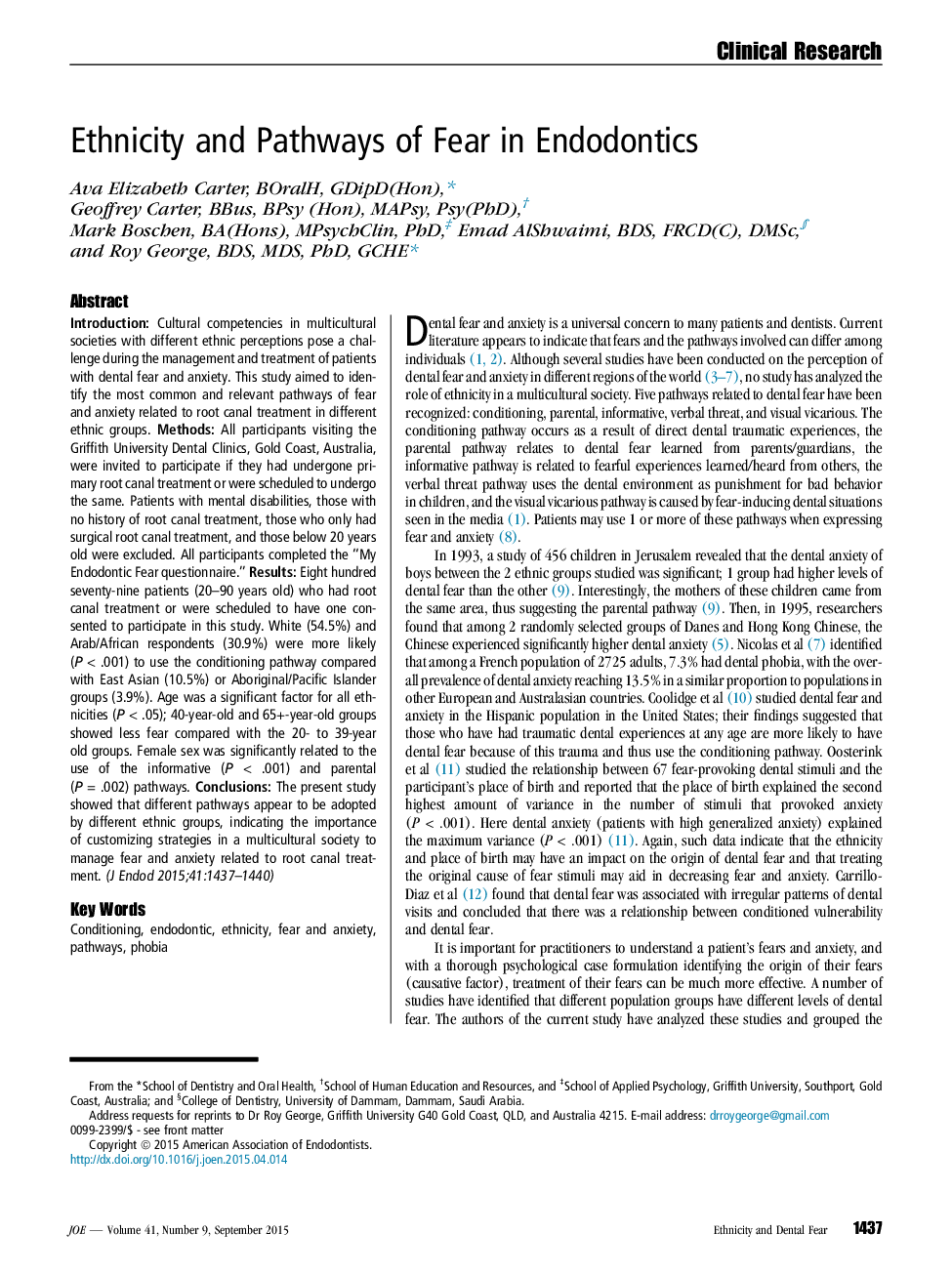| Article ID | Journal | Published Year | Pages | File Type |
|---|---|---|---|---|
| 3146588 | Journal of Endodontics | 2015 | 4 Pages |
IntroductionCultural competencies in multicultural societies with different ethnic perceptions pose a challenge during the management and treatment of patients with dental fear and anxiety. This study aimed to identify the most common and relevant pathways of fear and anxiety related to root canal treatment in different ethnic groups.MethodsAll participants visiting the Griffith University Dental Clinics, Gold Coast, Australia, were invited to participate if they had undergone primary root canal treatment or were scheduled to undergo the same. Patients with mental disabilities, those with no history of root canal treatment, those who only had surgical root canal treatment, and those below 20 years old were excluded. All participants completed the “My Endodontic Fear questionnaire.”ResultsEight hundred seventy-nine patients (20–90 years old) who had root canal treatment or were scheduled to have one consented to participate in this study. White (54.5%) and Arab/African respondents (30.9%) were more likely (P < .001) to use the conditioning pathway compared with East Asian (10.5%) or Aboriginal/Pacific Islander groups (3.9%). Age was a significant factor for all ethnicities (P < .05); 40-year-old and 65+-year-old groups showed less fear compared with the 20- to 39-year old groups. Female sex was significantly related to the use of the informative (P < .001) and parental (P = .002) pathways.ConclusionsThe present study showed that different pathways appear to be adopted by different ethnic groups, indicating the importance of customizing strategies in a multicultural society to manage fear and anxiety related to root canal treatment.
